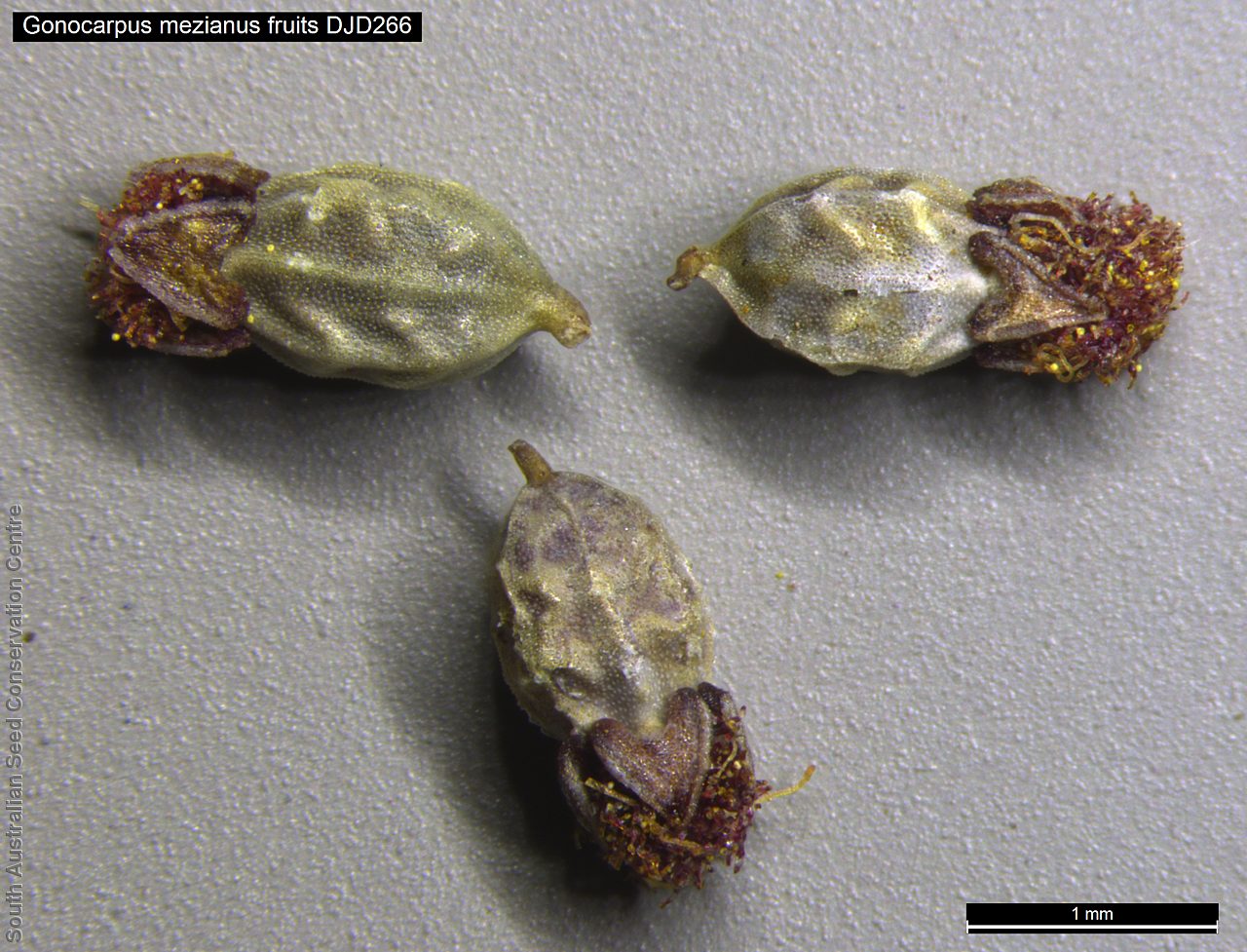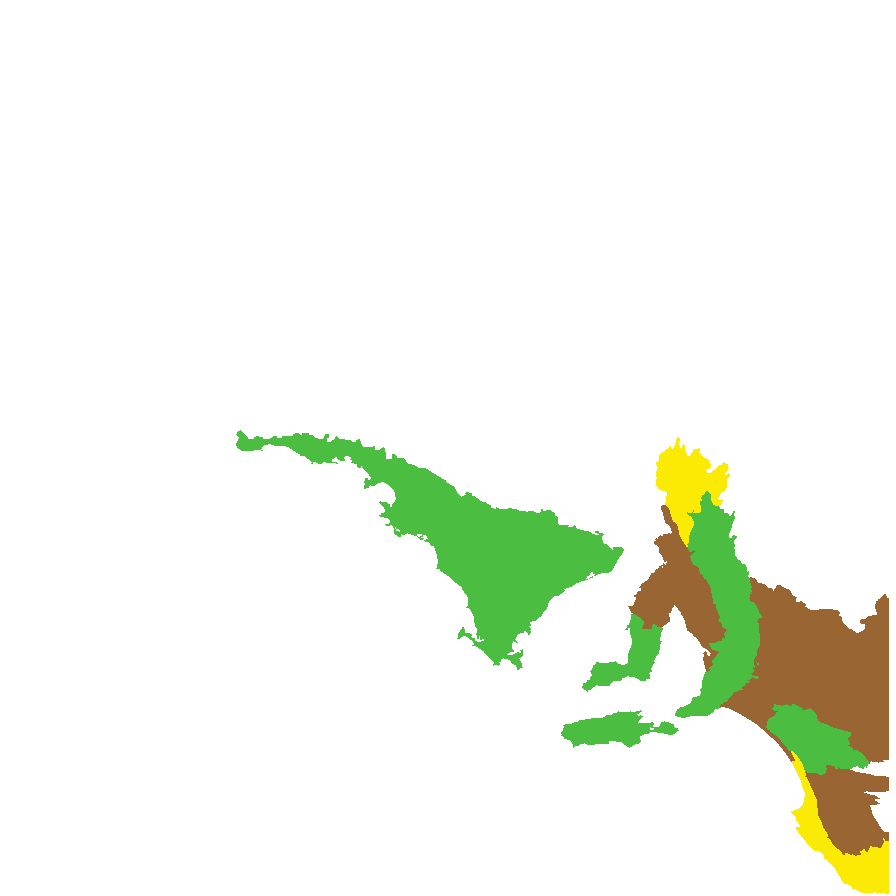











Botanical art
Prior names
Haloragis teucrioides var. glabrata
Haloragis teucrioides var. meziana
Haloragis meziana
Haloragis teucrioides, partly
Common names
Hairy Raspwort
Broad-leaf Raspwort
Etymology
Gonocarpus from the Greek 'gonia' meaning angle, corner and 'carpos' meaning fruit, referring to its ribbed fruits. Mezianus named after Prof. Carl Christian Mez (1866-1944), a German botanist at Breslau, Halle, Königsberg (1910–1935 director of the Botanical Garden) and finally Freiburg.
Distribution and status
Found in the southern part of South Australia growing on dry rocky soils, often with Gonocarpus elatus, with which it sometimes hybridises. Also found in Victoria. Native. Common in South Australia. Rare in Victoria.
Herbarium regions: Eyre Peninsula, Northern Lofty, Yorke Peninsula, Southern Lofty, Kangaroo Island, South Eastern, Green Adelaide
AVH map: SA distribution map (external link)
Plant description
Erect or ascending perennial herb to 30 cm tall with strongly 4-angled, hairy stems. Leaves opposite becoming alternate above, subsessile, broadly ovate to cordate, to 17 mm long and 15 mm wide; margin thickened, with 8-12 coarse teeth. Inflorescence a leafy-spike at the tip of stems, with numerous red flowers. Flowering between August and February. Fruits are small silver-grey to purplish ovoid fruit to 1.3 mm long and 1 mm wide, with 8-ribbed and 2-3 calluses between the ribs, scabrous surface. Seeds are considered the same as the fruit.
Seed collection and propagation
Collect seeds between October and March. Collect maturing fruits, those that are fat and turning grey-purple, by running your hands along the fruit-spikes. Place the fruit in a tray and leave to dry for 1 to 2 weeks. No further cleaning is required if only fruits were collected. If collected with other material, use a sieve to separate the unwanted material. Store the seeds with a desiccant such as dried silica beads or dry rice, in an air tight container in a cool and dry place. From one collection, the seed viability was low, at 20%.
| Location | No. of seeds (weight grams) | Number of plants | Date collected | Collection number Collection location | Date stored | % Viability | Storage temperature |
|---|---|---|---|---|---|---|---|
| BGA MSB | 8,500 (3.1 g) 8,500 (3.1 g) | 50 | 30-Nov-2005 | DJD266 South Eastern | 1-Aug-2006 | 20% | -18°C |
Number of plants: This is the number of plants from which the seeds were collected.
Collection location: The Herbarium of South Australia's region name.
% Viability: Percentage of filled healthy seeds determined by a cut test or x-ray.